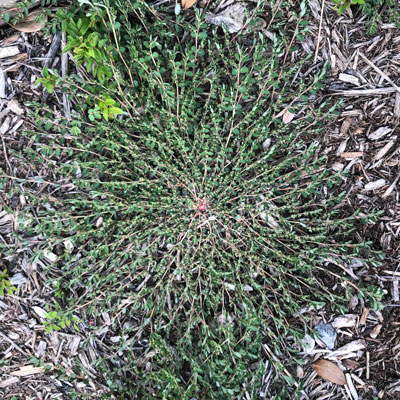Question of the Week – Number One: July 2, 2020
Same photo as Main page. Caption:
Photo: Karthik D. posted this photo to my Facebook page recently and asked for an ID and control.
“What is this weed, and how can I eliminate it? It grows so rapidly.”
It’s one of the several common weedy plants known as “spurges.” You’re perhaps familiar with the very flat-growing spurge with the sticky, milky stems. North Carolina State University lumps them all together as “Chamaesyce maculata, C. prostrata, and others.”

All spurges are easily removed physically. Each plant has one central tap root and one single stem.
• Use a well-sharpened hoe to sever the stems and the plants will be gone.
• Or, cut them with a line trimmer, but the spew will be messy.
• Or, cover the bed at the beginning of the season with a 1-inch layer of bark mulch or compost. If any seedlings germinate and make their way through the mulch, just take a small rake and gently rearrange the mulch. You’ll disturb the plants enough that they’ll dry out and die.
• Or, out in the open, to control a large amount of any of the spurges, a broadleafed weedkiller containing 2,4-D will do the job. Read and follow label directions for best results.
• The best long-term options to stop spurges are:
A. In lawn areas, keep the grass growing vigorously. It will crowd out the weed.
B. In landscape and garden beds, apply a 1-inch layer of mulch. The spurge seeds can’t compete.
